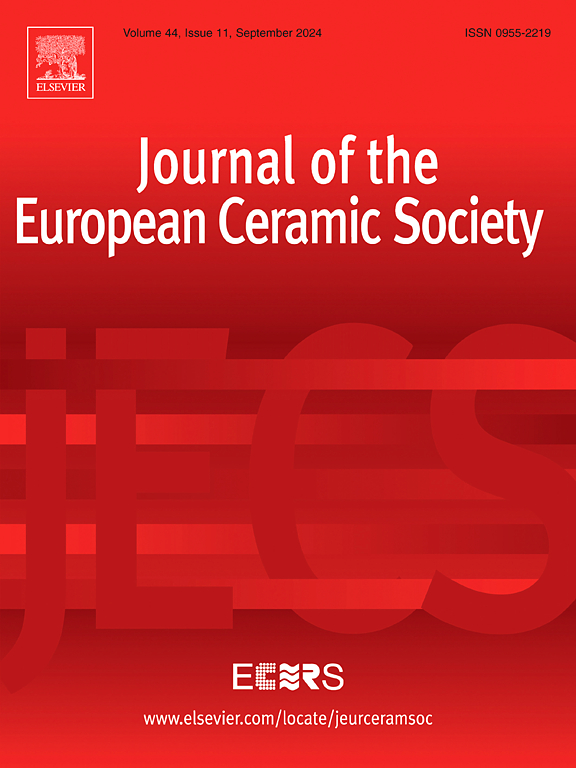Monolithic electrolyte-supported solid oxide fuel cells fabricated by gel-casting on 3D-printed moulds
IF 5.8
2区 材料科学
Q1 MATERIALS SCIENCE, CERAMICS
Journal of The European Ceramic Society
Pub Date : 2025-03-19
DOI:10.1016/j.jeurceramsoc.2025.117379
引用次数: 0
Abstract
A new approach for fabricating monolithic electrolyte-supported Solid Oxide Fuel Cells based on gel-casting technique on 3D-printed moulds is proposed to enhance their electrochemical and mechanical performances. Conventional planar and honeycomb configurations of 8 mol% yttria-stabilized-zirconia (YSZ) electrolytes were gel-casted. Proper aqueous ink formulations of YSZ and agarose gelling agent were prepared, and moulds made of polylactic acid filament were fabricated by 3D-printing. The mechanical behaviour of gel-casted ceramics was compared with cold-isostatic-pressed ones, using ball-on-3-balls bending strength and nanoindentation tests. Complementarily, the effect of electrolyte geometry on the mechanical stress distribution was investigated by finite element simulation. Finally, complete fuel cells were fabricated and electrochemically characterized, using Ni-YSZ anode and lanthanum-strontium-manganite-YSZ cathode. Electrochemical performance of the honeycomb cell (227 mW·cm−2 at 900°C) was significantly higher than the planar one (189 mW·cm−2 at 900°C). The electrochemical and mechanical properties of gel-casted electrolytes, close to state-of-the-art ones, validate this new approach.
求助全文
约1分钟内获得全文
求助全文
来源期刊

Journal of The European Ceramic Society
工程技术-材料科学:硅酸盐
CiteScore
10.70
自引率
12.30%
发文量
863
审稿时长
35 days
期刊介绍:
The Journal of the European Ceramic Society publishes the results of original research and reviews relating to ceramic materials. Papers of either an experimental or theoretical character will be welcomed on a fully international basis. The emphasis is on novel generic science concerning the relationships between processing, microstructure and properties of polycrystalline ceramics consolidated at high temperature. Papers may relate to any of the conventional categories of ceramic: structural, functional, traditional or composite. The central objective is to sustain a high standard of research quality by means of appropriate reviewing procedures.
 求助内容:
求助内容: 应助结果提醒方式:
应助结果提醒方式:


